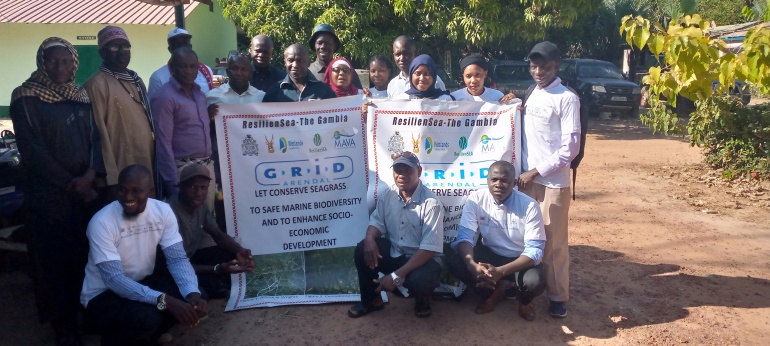
Over 30 journalists ranging from print, electronic and online has recently benefit a day long training on importance of seagrass as marine resources and the various ecosystem services they provide.
The training was coordinated by Department of Parks and Wildlife and Biodiversity Action Journalists, supported by Resilient Sea, Grid Arendal, Wetlands International and funded by MAVA Foundation.
In his welcoming remarks, Momodou Lamin Gassama the Director of the Department of Parks and Wildlife Management (DPWM) expressed delight for the DPWM to be hosting such an important occasion. He went on to state the purpose of the training and the anticipated outcomes. Further to that, he gave a brief explanation on the importance of seagrass as marine resources and the various ecosystem services they provide.
The Director also gave a briefing on the various locations such as Brufut, Tanji, Gunjur and Kartong where seagrasses are recorded during the previous exercises conducted by the project team. In addition, he urged all and sundry to take part in the conservation and protection of seagrasses. He also emphasized the need for information dissemination as a conservation tool thus task journalist to be fore fronters in that aspect.
Mr Omar Sanneh of DPWM during his presentation he first made a synopsis of the project. In this area, the aims and objectives of the project was communicated and also the participants were made to understand that the project is a pilot in seven (7) West African countries of which Gambia happens to be part. Also, to that, the trainees were made to understand that the Gambia has so far recorded the largest concentration of seagrass meadow than the other six (6) piloted West African countries.
Mr Sanneh presentation also highlighted the two different type of seagrasses so far discovered during their monitoring. He introduce participants to seagrass (families and species), seagrass species found in West Africa and Gambia, improve understanding on seagrass, different ecosystem services provided by seagrass, seagrass challenges, seagrass biology and morphology, ecology of seagrass (critical parameters for survival) and seagrass-mangrove-coral reef relationship.
Mr Dawda Saine presentation also highlighted the various ecosystem services provided by seagrass meadows such as the various provisioning, supporting, regulating and cultural services it provides.
Mr Saine presentation also focused more on the different threats to seagrass and to make them easily comprehensible, a zonation of the sea and the different categories of usage by different marine resource users was projected. The impact of each of the users on seagrass at each of the zones was also highlighted and included were fishing activities, pollution and scientific activities.
Ms Ramatoulie Jallow a reporter from the Gambia Radio and Television (GRTs) on behalf of participants thanked the organizers for exposing them to such a very important refresher training while challenging her colleagues to use their platforms to do mass awareness campaign by targeting local communities and most importantly the manufacturing industries responsible for point source pollution. She appealed for more capacity building to be extended to more journalists reporting on environment.
The closing remarks was done by Mr. Kawsu Jammeh, Senior Wildlife Conservation Officer. He re-echoed the importance of this training exercise and urge participants to take lead the quest to conserve seagrass and other important marine resources for the benefit present and future generations. He also emphasized the widened of stakeholder involvement to ensure that no key stakeholder is left out.


